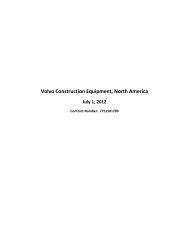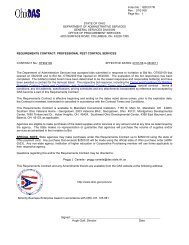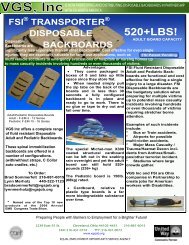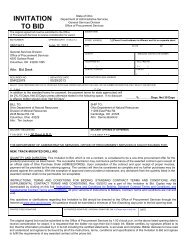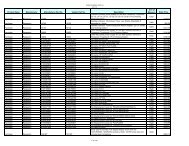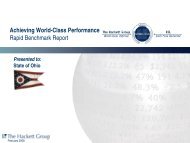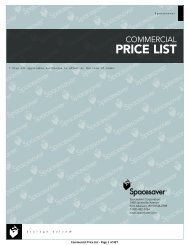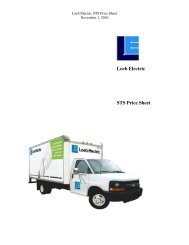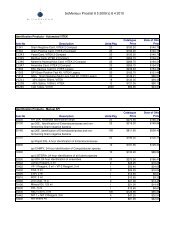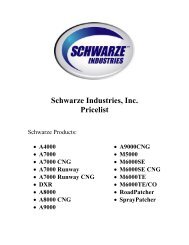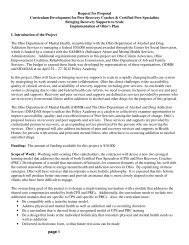REQUEST FOR PROPOSALS RFP NUMBER: 0A1031 DATE ISSUED
REQUEST FOR PROPOSALS RFP NUMBER: 0A1031 DATE ISSUED
REQUEST FOR PROPOSALS RFP NUMBER: 0A1031 DATE ISSUED
Create successful ePaper yourself
Turn your PDF publications into a flip-book with our unique Google optimized e-Paper software.
15. Retro reflective device – Optical constructions that reflect light such that covert logos<br />
become visible over the entire document when viewed using a focused light source or<br />
retro reflective viewer.<br />
16. Security threads – Metal or plastic, these threads are seen on currency. With special<br />
metalized film, demetallized text is invisible in reflected light and therefore is difficult to<br />
copy. When viewed in transmitted light, the opaque aluminum letters are clearly visible.<br />
17. Thin film interference filters – Multiple layer structures that produced color effects by<br />
interference.<br />
18. Tactile feature – A feature which is apparent to touch or feel without requiring a special<br />
instrument. This could include texture, flexibility, or weight of the document and/or a<br />
feature incorporated in the card structure or card components.<br />
19. If Ohio decides to issue REAL ID compliant credentials, the Contractor must provide a<br />
card that includes or allows to be printed, the DHS approved REAL ID security marking.<br />
Two-Dimensional Barcode. The PDF417 symbology (see ISO/IEC 15438 Automatic<br />
Identification and Data Capture Techniques – International Two-dimensional Symbology<br />
Specification – PDF417) must be used for the Driver’s License and Identification Cards.<br />
The following PDF417 symbology variants as defined in the ISO/IEC 15438 Automatic<br />
Identification and Data Capture Techniques – International Two-dimensional Symbology<br />
Specification – PDS417 must NOT be used.<br />
- Compact PDF417<br />
- MicroPDF417<br />
- MacroPDF417<br />
Magnetic Stripe. The back of the laminated or coated DL/ID card must have a magnetic<br />
stripe near the top of the DL/ID card. Specifications for the magnetic stripe are listed below:<br />
1. The magnetic stripe must be encoded by the Contractor furnished hardware using<br />
AAMVA recommended industry standards, with data that will provide access to stored<br />
records and/or images for verification purposes.<br />
2. The encoded data must remain in usable condition for a minimum of four years after<br />
issuance. Total thickness of the laminated or coated license with a magnetic stripe must<br />
meet generally accepted ISO 7810 credit card industry standards, including warping and<br />
surface distortion standards.<br />
3. The magnetic stripe must be high coercivity of not less than 3000 oersted and capable of<br />
storing 204 characters including start and end sentinels and LRC characters. Tracks 1, 2<br />
and 3 data characteristics must conform to AAMVA recommended standards.<br />
4. Track 2 must be easily read by commercially available magnetic stripe readers.<br />
5. Information that will be encoded on Tracks 1, 2 and 3 will be AAMVA specified standards.<br />
6. Magnetic stripe reading errors must not exceed 0.1%.<br />
7. The bit and density characteristics for Tracks 1, 2 and 3 on the magnetic stripe must<br />
meet AAMVA specifications.<br />
The physical characteristics and dimensions must conform to ISO/IEC 7810. The magnetic<br />
stripe area must conform to ISO/IEC 7811-6 for Tracks 1, 2 and 3.<br />
Page 37 of 115



